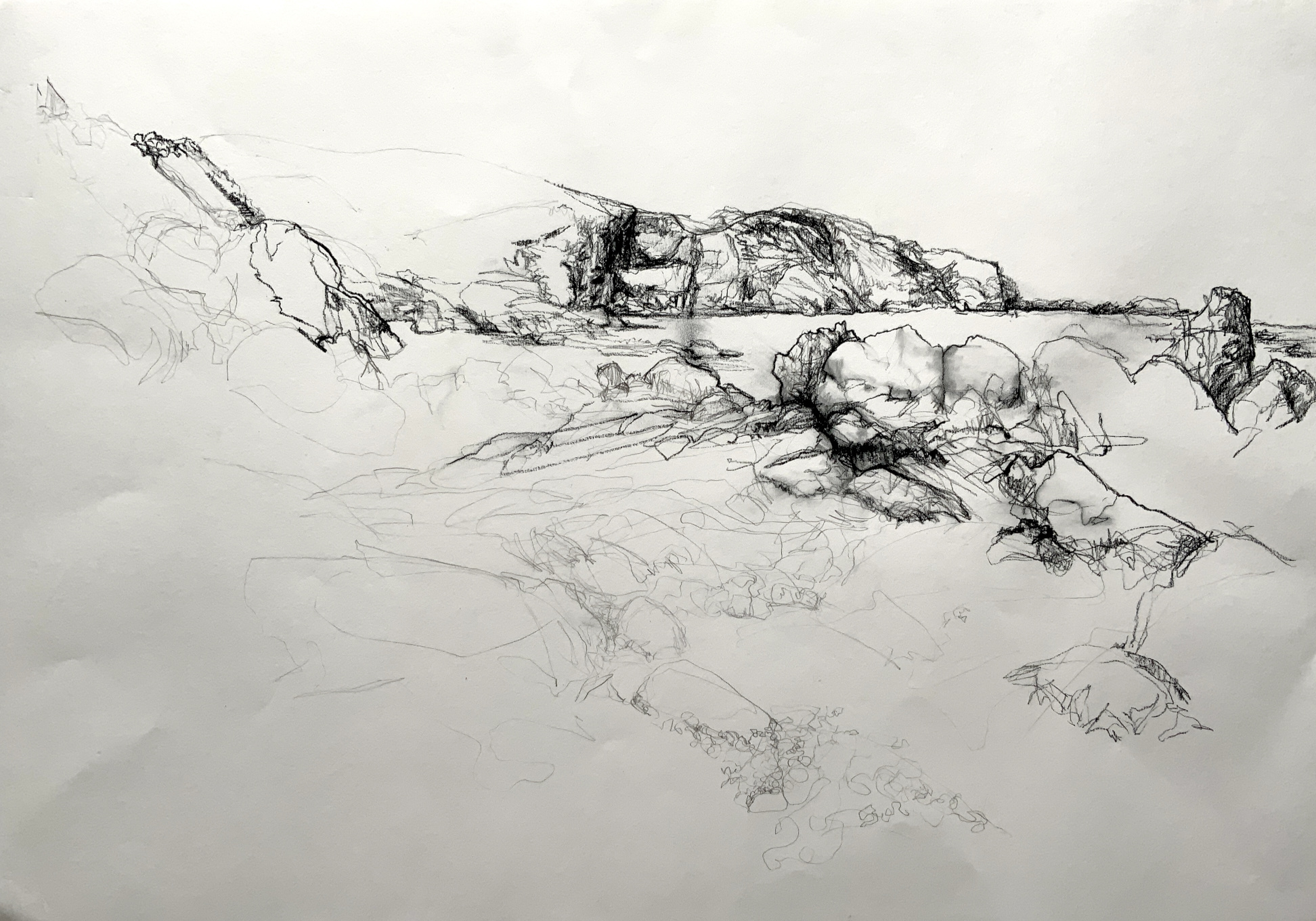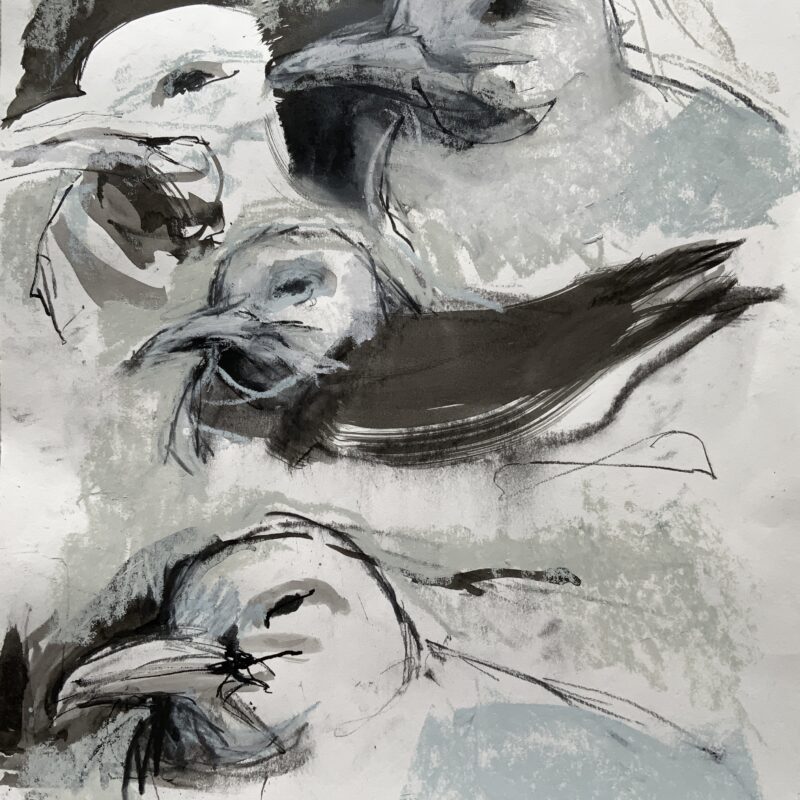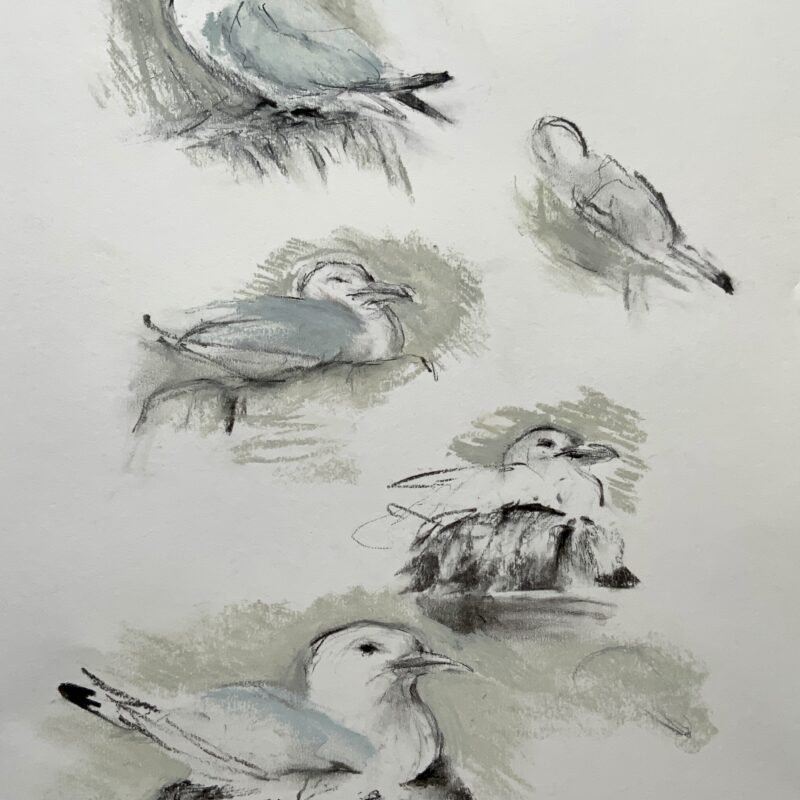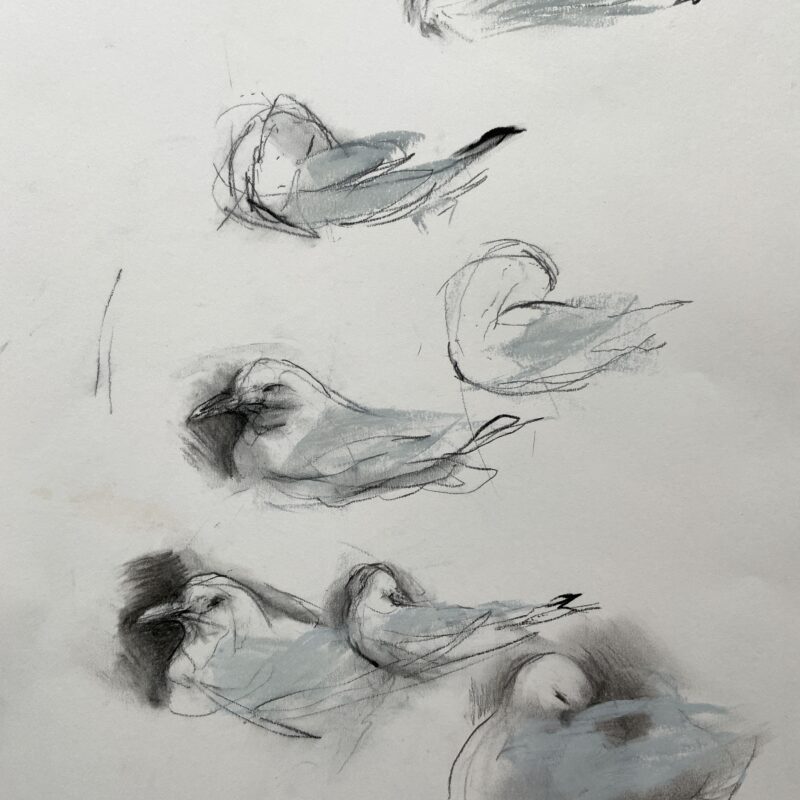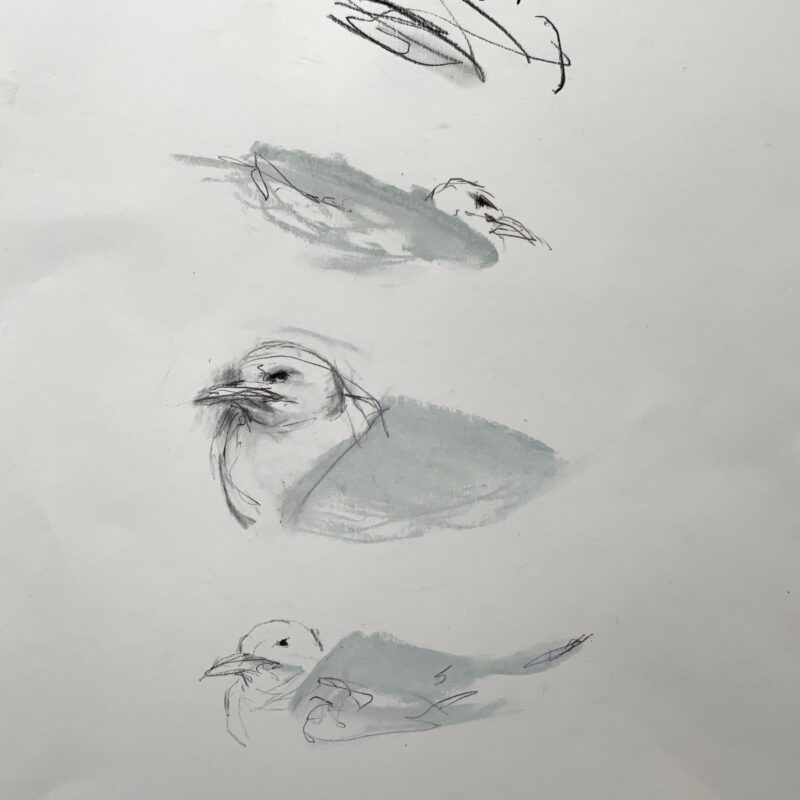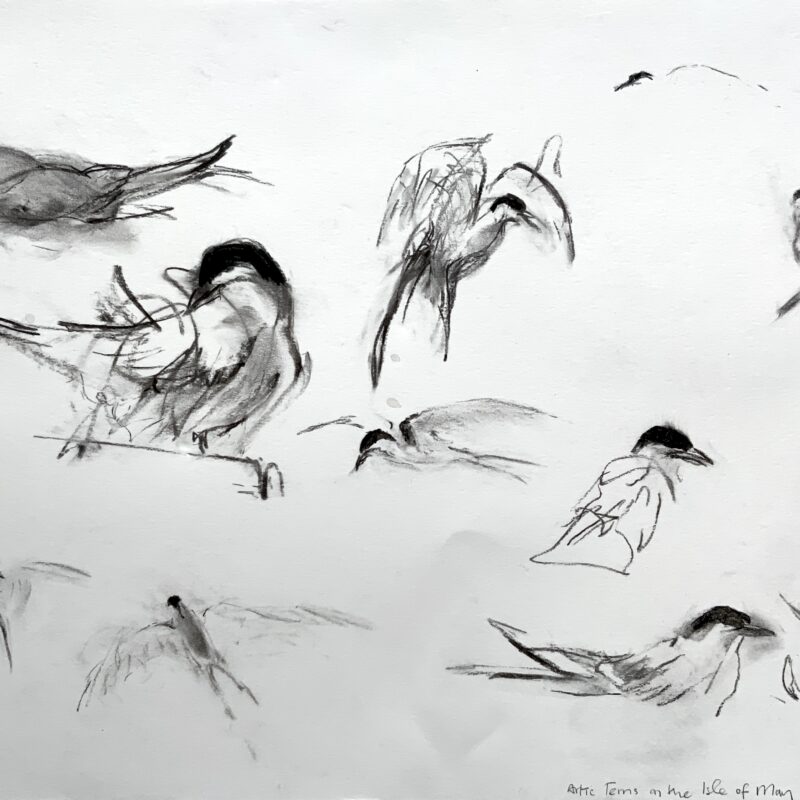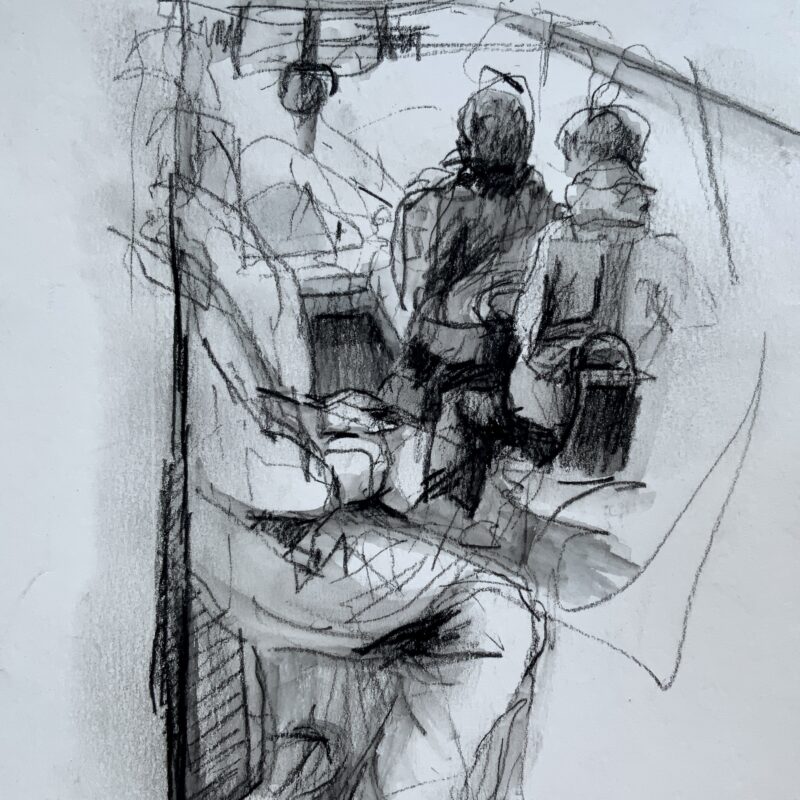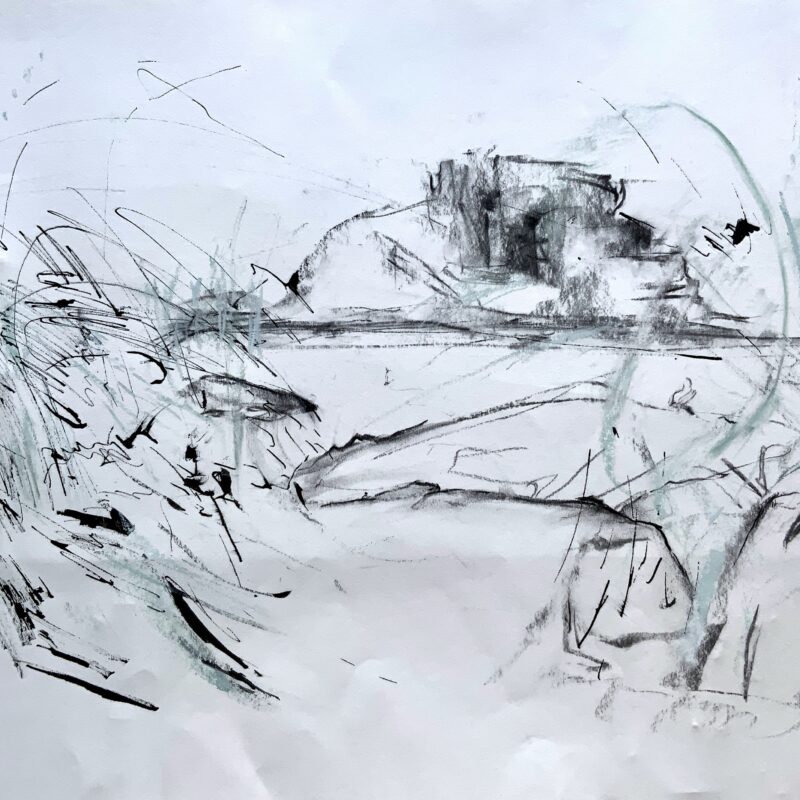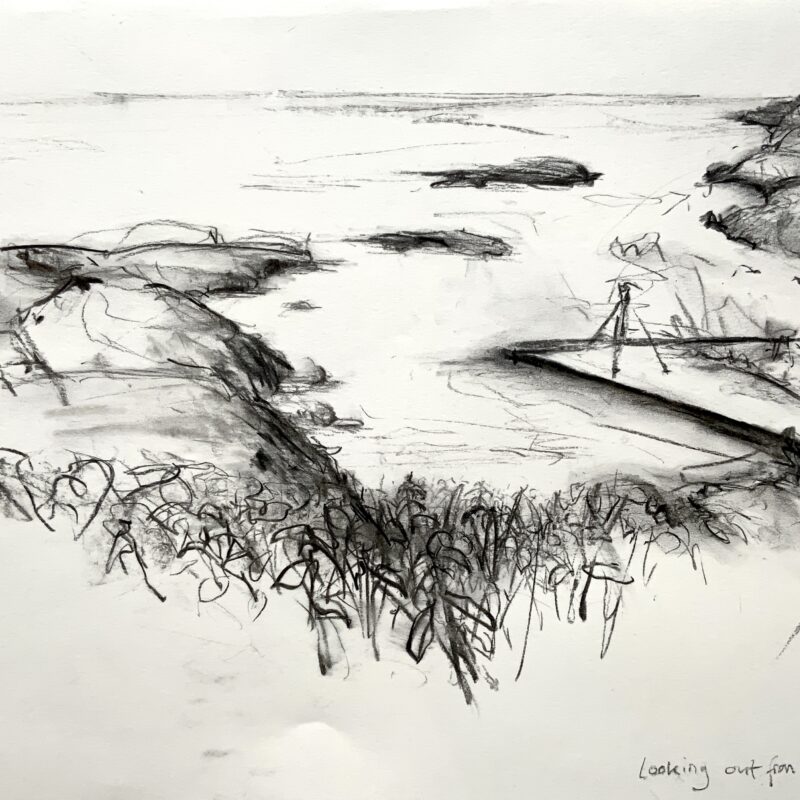Jules Bradbury – John Busby Seabird Drawing Course 2022 Bursary Report
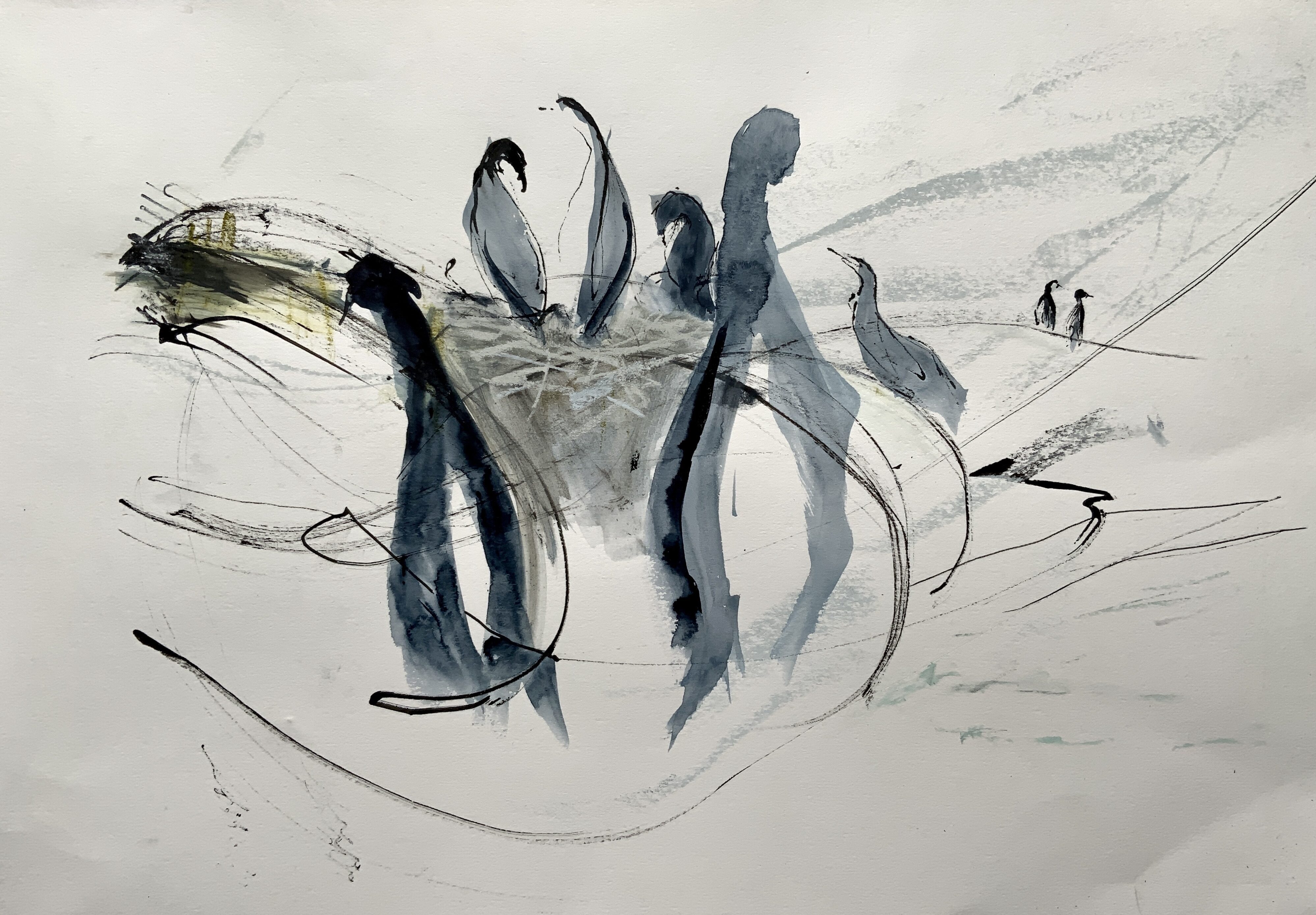
In all the cacophony, amongst the weather-scoured rocks where the land of East Lothian meets the North Sea, the thing I least expected to feel was tenderness. Watching the Kittiwakes nestle into the rock, tucking their heads into their feathers to shelter from exposure to the insistent wind; we were gathered together to draw, crouching beneath the old stonework of Dunbar Harbour. Stiff with woollen layers of clothing, I sat clutching charcoal, paper and board, trying with varying degrees of success not to slide down the steep grassy slope! I had been awarded the bursary back in December 2019 in anticipation of my artist residency on Fair Isle in Summer 2020. Then came the pandemic – things were postponed, everything changed. Two years later, here I finally was: relieved to be amongst a fiercely alive bunch of artists, drawing despite everything because we must.
Each day would start early and stretch into late evening, bringing ourselves to the page, drawing for all we were worth. There were times I felt skinned, wrangling with this feathered ‘other’, struggling to grasp something of their being – this was my first time drawing seabirds out in the field. I felt raw, under-equipped and in need of a scope. Some days, I felt my ability to draw had simply deserted me. But there was steady encouragment on hand, a jolt of fresh approach from the tutors: swap the drawing tool, stretch the legs, change the perspective. Halt fest.
Midweek, we made a pilgrimage to the studio of John Busby, entering a churchlike atmosphere of quiet contemplation that lingered in the place – Julia poignantly scooping up a dead long-eared bat for her reliquary on our climb up to the attic. Surrounded by his books and paintings, Rachel, his daughter, spoke about his life and offered up his prolific sketchbook work for us to study. Stepping back out into the growing warmth of the day, I found the experience of the visit reaffirming the direction of my own work: looking afresh at colour, at the sensuality of movement: the immediacy and urgency of life.
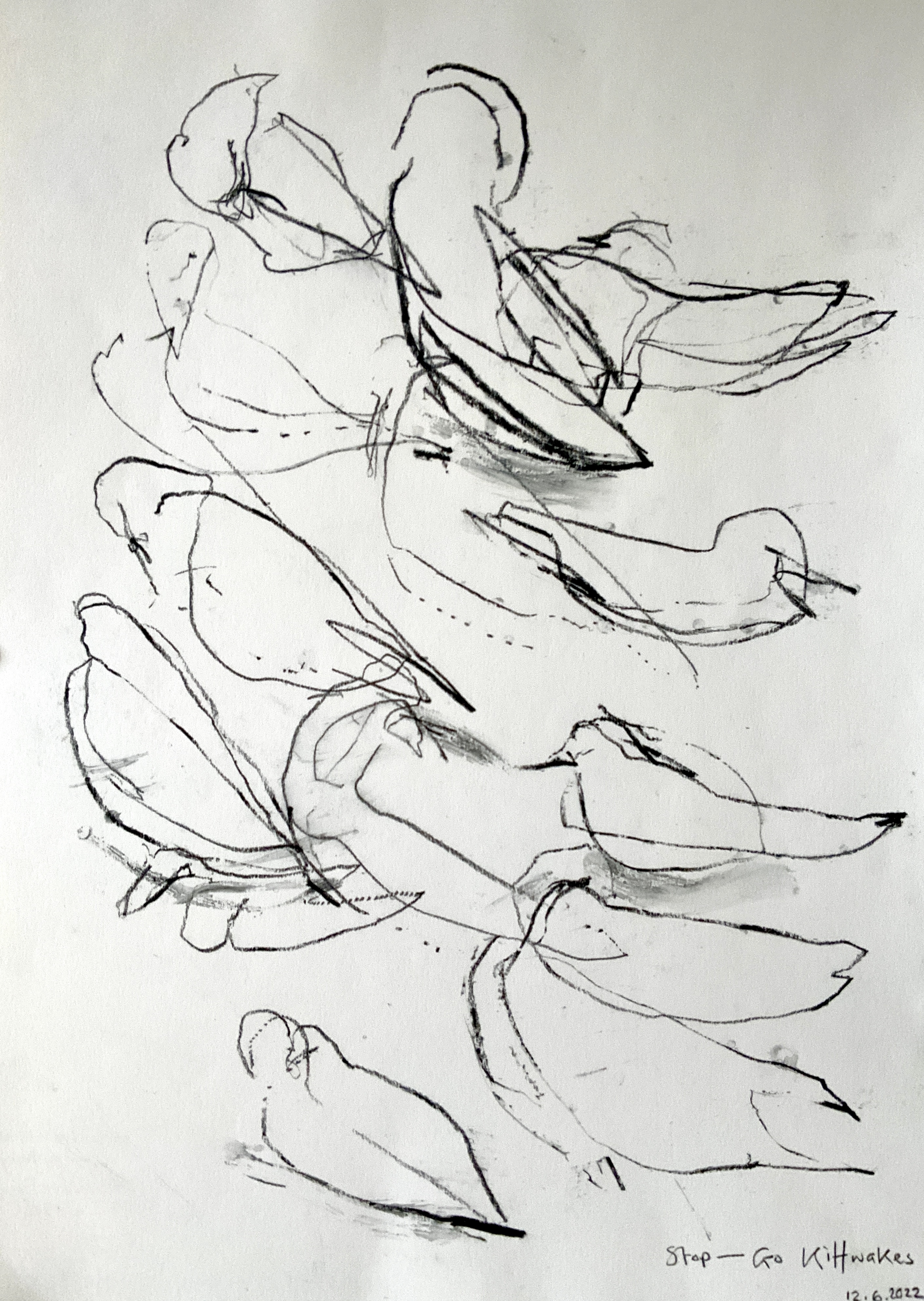
Then off on glorious boat journeys to the islands: energising us out on the water, moving us away from the man-made for us in turn to become the ‘other’, going closer-in to immerse in the world of the seabirds. On Fidra I could observe the colony of Shags there, finding delight in echoing their sinuous lines, my brush flooded with watercolour. Tutor Nik Pollard urged us to listen, to map the sounds and let that break into the page and inform our work. Yet in the thick of all this noise and life, I saw several dead birds in the water – victims of their pandemic of avian ‘flu. On the Isle of May we skirted Artic Terns savagely defending their young; their tenacity to survive playing out in front of us.
And then the vertiginous experience of St. Abb’s Head––more clinging on! More sensuous following of lines in an unimaginably wild landscape. That was a day we all wished could never end––the extraordinary privilege to be out amongst others working obsessively, a release from usual workaday solitude, observing and exploring the astonishing beauty of life on the edge.
I want to acknowledge the support given by SWLA and thank the 3 vivacious tutors (wildly talented and generous) and also pay tribute to the legacy of John Busby, sustained by the dedication of his family.
